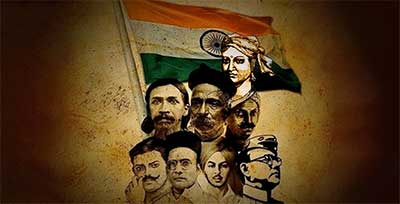Dictionary of Martyrs : India's Freedom Struggle (1857-1947)
CONTEXT:
A three-member committee appointed by the Indian Council of Historic Research (ICHR) to review the entries in the fifth volume of the ‘Dictionary of Martyrs: India’s Freedom Struggle (1857-1947)’ is understood to have left the martyrs of the Left movement, or the Communist movement of Kerala, untouched.
The committee is understood to have recommended the deletion of the Malabar Rebellion leaders Variamkunnath Kunhamed Haji, Ali Musaliar, and 387 other ‘Moplah martyrs’ from the list.
FOR PRELIMS:
C.I. Issac, a member of the ICHR, gave a report to this effect five years ago after scrutinising the manuscript of the now controversial publication, “The Dictionary of Martyrs: Freedom Struggle 1857-1947.”
- The publication included the names of the victims of the Communist movement in Kerala and the Wagon tragedy-Malabar Rebellion as Martyrs of the freedom struggle.
- The “Punnapra-Vayalar uprising occurred only after September 2, 1946, the day when Nehru’s interim national government took over the Indian administration.” The “Indian Communists believed that India is not a cultural and political unit. It is the conglomeration 17 nationalities. Thus their agitation is against the government of Nehru. So the following names, which appear in the project associated with Communist movement in Kerala should be deleted from the yet to be published project,” it was reported.
- According to the report, the Karivelloor uprising took place on December 20, 1946. “It is also not the part Indian freedom struggle. It was to regain the lost image of Communist party,” Dr. Issac reported.
- Another Communist movement in Kerala took place at Kavumbayi on December 30, 1946. The names of these two Communist martyrs creating riots should not be incorporated in the Martyr’s Dictionary, he suggested.
About Communist freedom fighters:
- Despite generally being neglected and discarded in the historiography of India’s glorious freedom movement, it has to be accepted that the Communists played a crucial role in the country’s freedom struggle.
- While the Communists were ideologically at loggerheads with the Indian National Congress (INC), even Viceroy Lord Irwin, in his 1929 speech to the Legislative Assembly, stated that “the disquieting spread of Communist doctrines has been causing anxiety” and declared that the government would take strict measures.
- But the Communists believed India’s freedom could neither be achieved through British government’s reforms nor by Congress’ idea of peaceful means. For them, socialism was the only way to emancipate the masses from poverty and destitution, once the country is freed from the imperialist rule.
- During the period of 1920-29, a series of conspiracy cases had been levelled against the Communists, including the Meerut Conspiracy case (1929) which resulted in harsh prison sentences. In fact, the Communist Party of India (CPI) was an illegal party for most of the time under the British rule. It was only in 1937 when the Congress ministries came to power in several states that the ban was lifted. But it had to go underground again in 1940, and could only start functioning openly after it supported the anti-fascist allies in the World War II.
- Communists were also the first to advocate complete independence and raise it before the National Congress. At the 1921 session of the INC, Maulana Hazrat Mohani and Swami Kumaranand moved the resolution for complete independence for the first time. Signed by M N Roy and Abani Mukherjee, the manifesto called upon the Congress to adopt complete independence as its mission and render full support to the struggles of the working class and peasantry.
- The year 1928 also saw the Communists succeed in forming big unions, leading plenty of strike-struggles of the working class while advocating complete independence of the country.
- The CPI came up with its own Platform of Action in 1930, listing out a complete programme for achieving independence. Determined to oust the colonisers, the platform emphasised a radical change while calling for confiscation and nationalisation of all 13 British factories, banks, railways, sea and river transport and plantations. Among other outstanding demands included an eight-hour working day and improvement in conditions of labour.
- Sensing their rising power, the British government countered with a spree of cases against Communists in Peshawar and Cawnpore in which stalwarts like Muzaffar Ahmed, Shaukat Usmani, S A Dange and Das Gupta were sent to prison.
- 1946 also witnessed militant peasantry struggles across the country as the Communist Party led the armed Vayalar and Punnapra struggle in the state of Travancore, militant Tebhaga struggle of peasants in Bengal. These actions demonstrated the potential that the peasant struggle led by the working class party could reach.
Sources
- The Indian Express
- The Hindu









